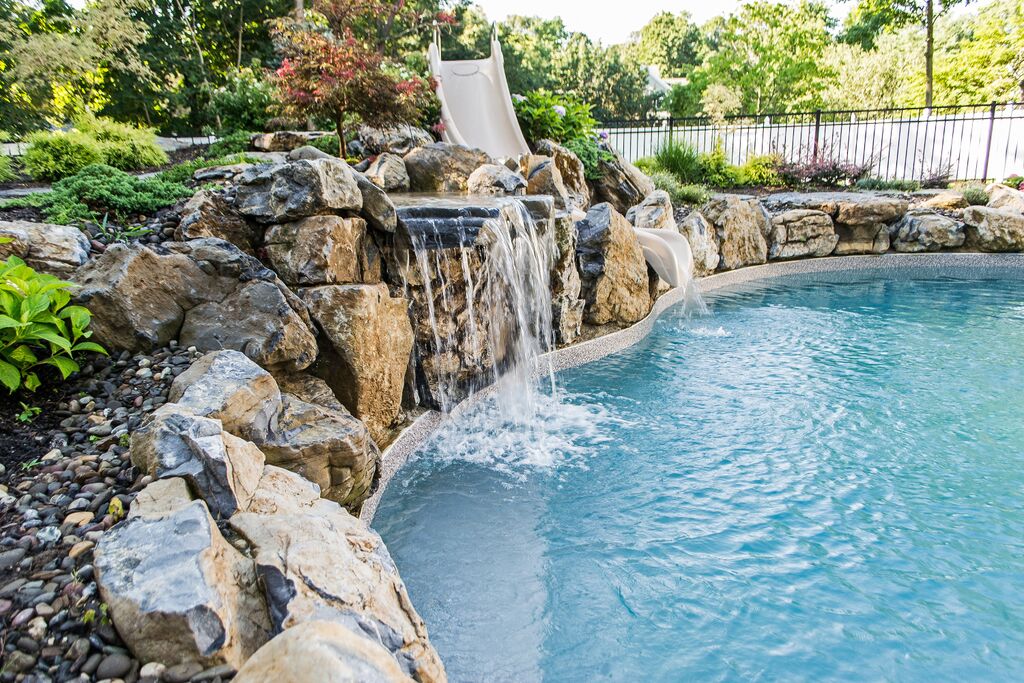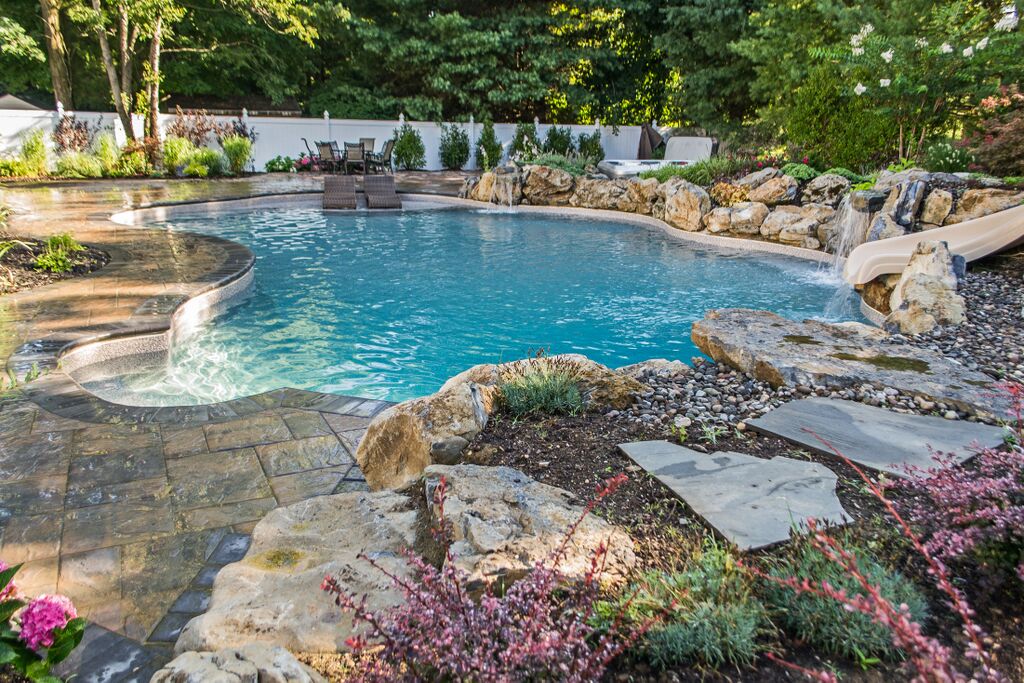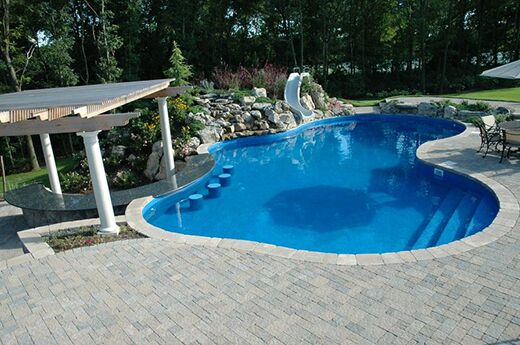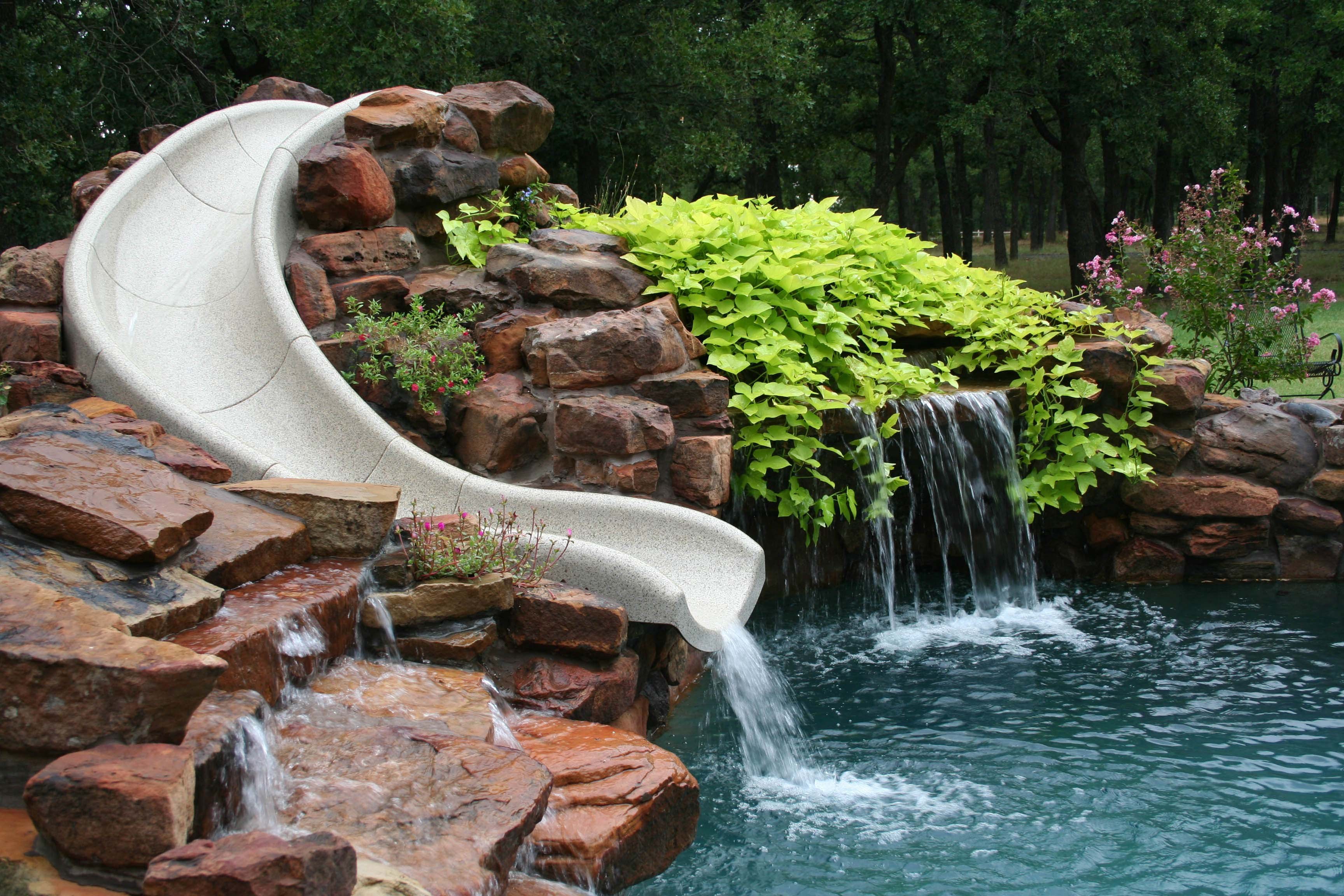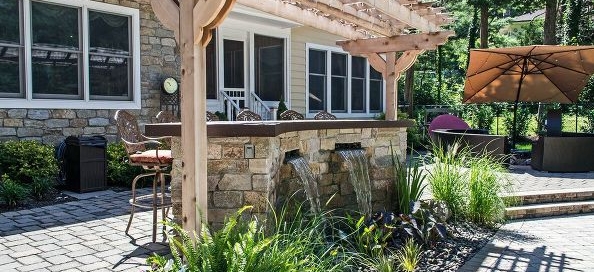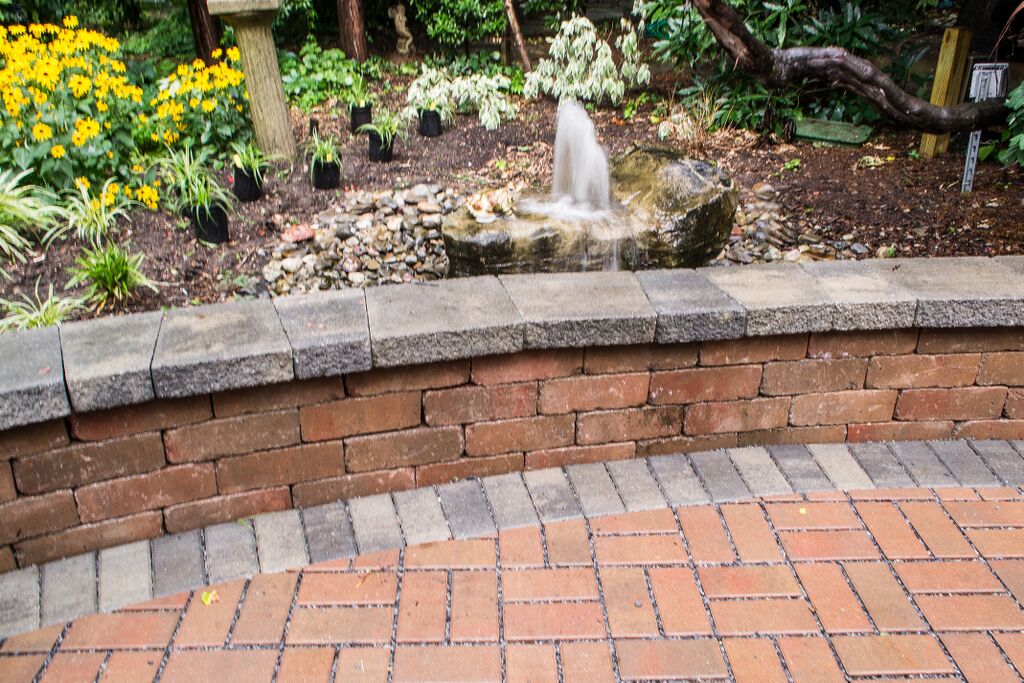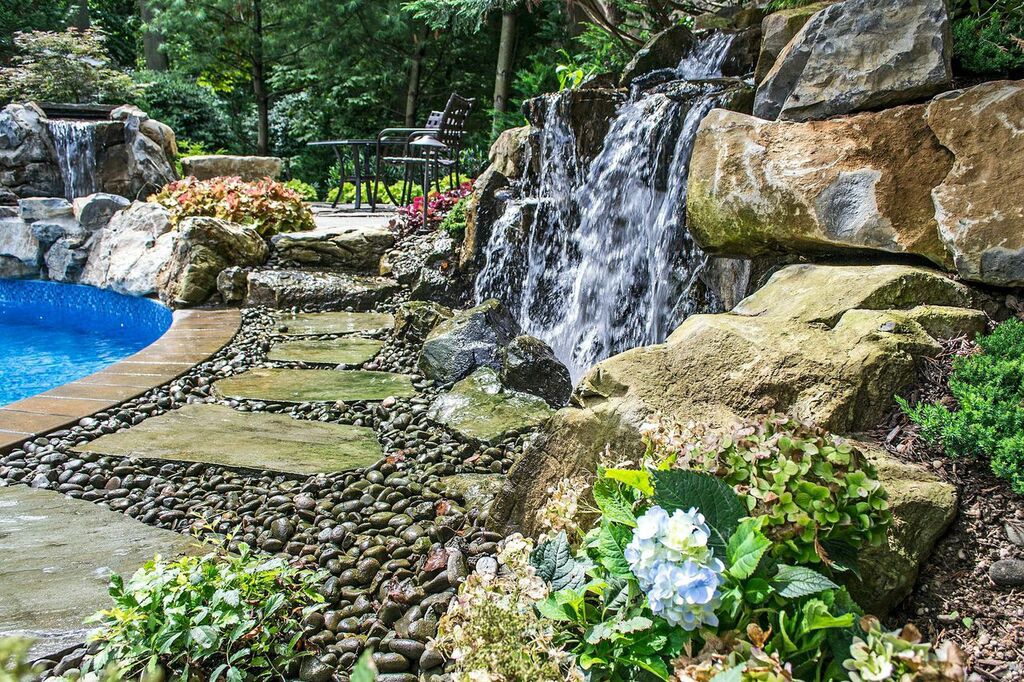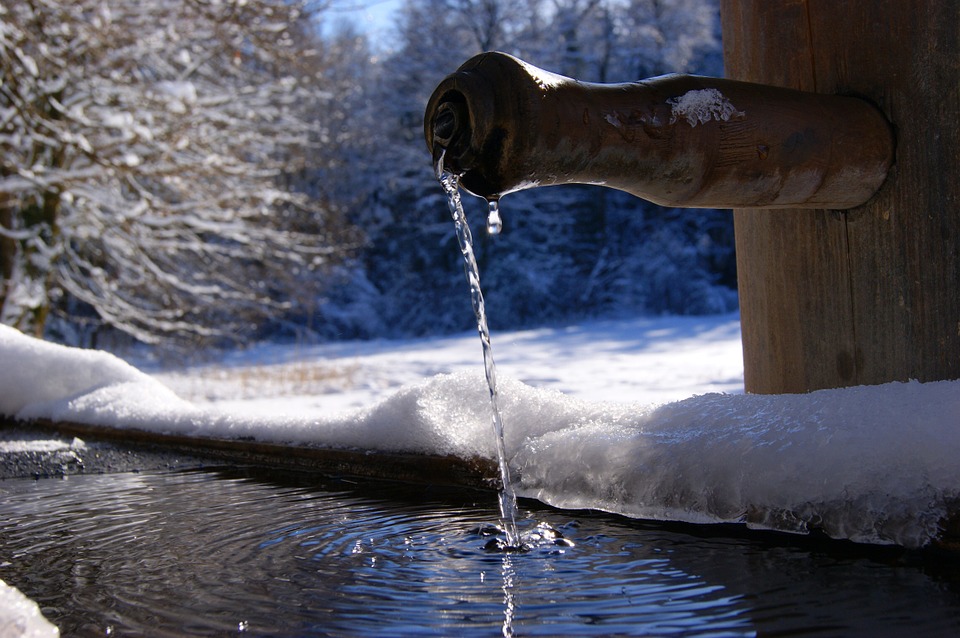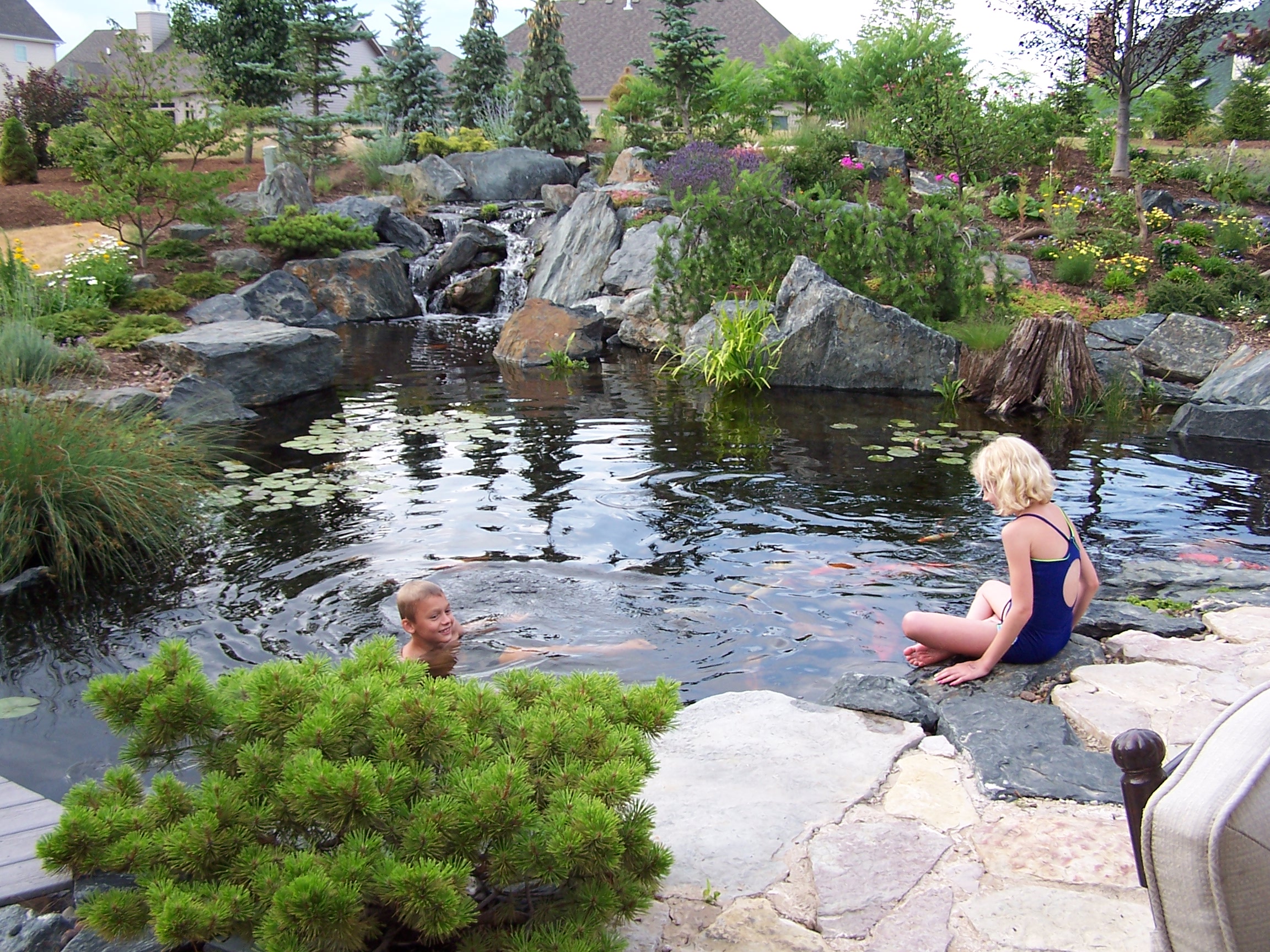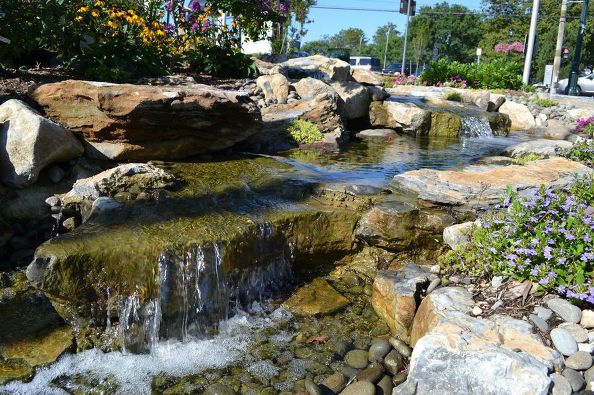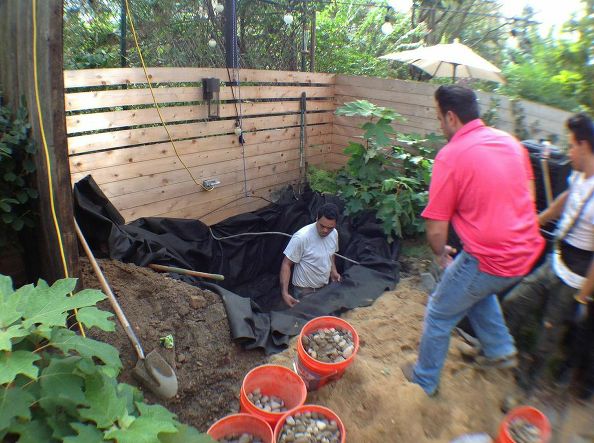Swimming Pool Slides: Bringing Waterpark Thrills Home
When you hear the words Cyclone, Vortex and Typhoon you might be tempted to run for cover, unless, of course, you’re at a waterpark where water slides with such names are the very reason for going.
And like so many other amenities that once required travel, homeowners are bringing waterpark thrills into their own backyards. There are several companies who’s frightening-sounding water slides offer just such home excitement: e.g., S.R. Smith (Cyclone, Turbo Twister, Typhoon etc.), Aquaslide (Jungle Joe and Jungle Joe II).
Indeed, Deck and Patio has been involved in installing their slides on Long Island and the New York Metro area for years. Their sizes and shapes have varied, as well as the scope of the projects (amount of landscaping desired) — depending on the client’s budget, property size, and the amount of adrenaline rush they desired.
Of course, you can have a slide, on its own, well-secured to your pool without any special landscaping. Or you can have a landscaping firm design/build a special setting around the slide you choose.
Beyond even that, if you want a slide custom-built to fit your existing landscape or future landscape plans, there is another company — Inter-Fab Inc. — who’s BYOS 1 and BYOS 2 slides are configured and designed to fit your plans and ideas.
“One thing very special about BYOS,” says Deck and Patio’s Bill Renter, “is they can be funky and fun, or they can be set into a sloped landscape to look almost natural. You decide everything. That’s the fun of it.”
Slide’s Side Benefit
No matter if the scope of the project is big or small, after its installed, clients discover something often unanticipated. When not in use by thrill-seekers, the calming sounds of water spilling from the slide into their pool transforms their Cyclone, Typhoon, Wild Ride etc. into a gentle water feature.
So readers: You learned it here first. Water slides aren’t just for thrills. On any given day, they can also help you relax.
It is important to have sufficient room to allow easy access to the slide and any surrounding patio. For this project, in order to cut back on having too much hardscape, we used stepping stones up from the patio to the slide, which are more in keeping with the slide’s natural setting.
This is the same slide project as pictured immediately above. When we worked on this water feature, we added large natural stones for the climb up to the top of the slide. Also note how an additional waterfall from the hilltop stream falls into the slide itself for an additional thrill.


